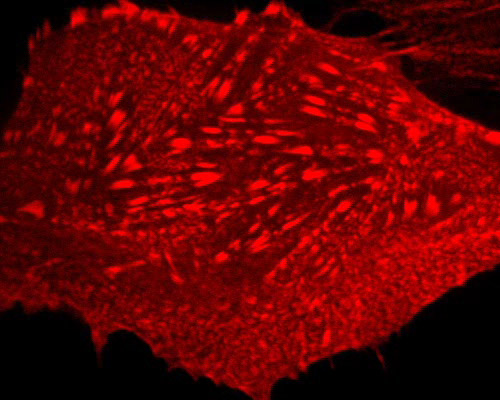Grey Fox Lung Cells with mRuby-α-Actinin

Biological sensors' ability to perceive and react to change in the cell is sometimes adjusted by protein scaffolds working within their interaction network. The alpha-actinin in the skeletal muscle has largely been believed to be a structural scaffold protein. Insufficiency of alpha-actinin-3 due to a common null polymorphism, however, mostly results in metabolic changes in skeletal muscle function.
Grey fox lung fibroblasts expressing mRuby fused to alpha-actinin are featured in this digital video sequence. In addition to being resistant to acidic environments, mRuby exhibits a high Stokes shift. Excitation and emission maxima of mRuby occur at 558 and 605 nanometers, respectively.



